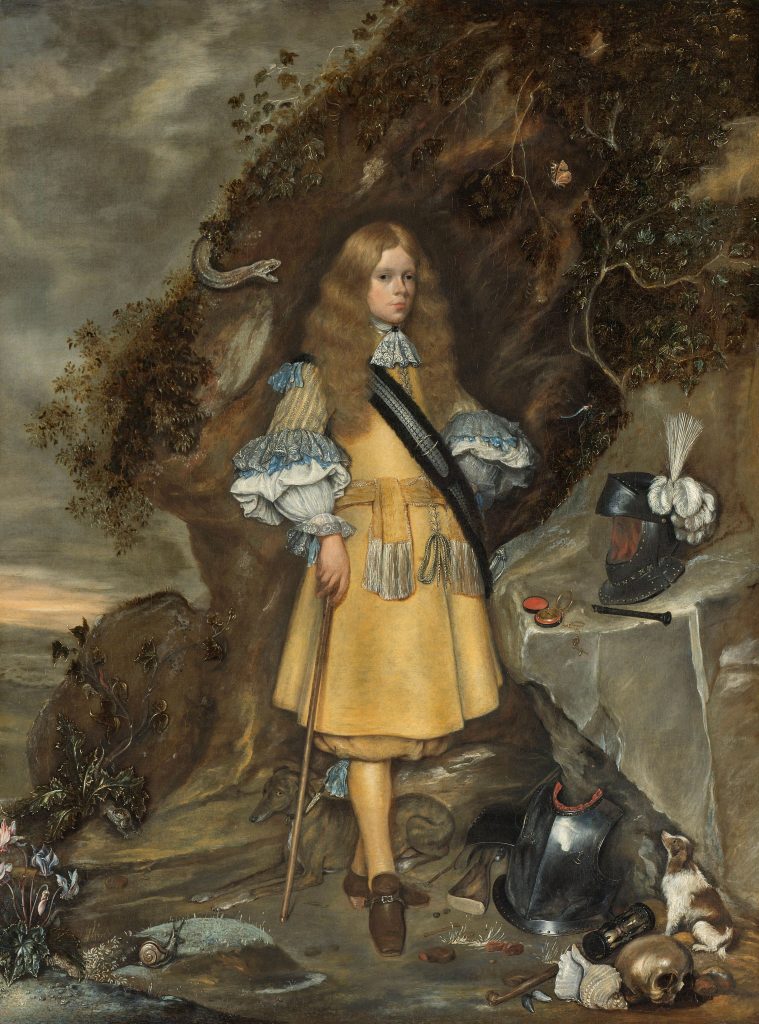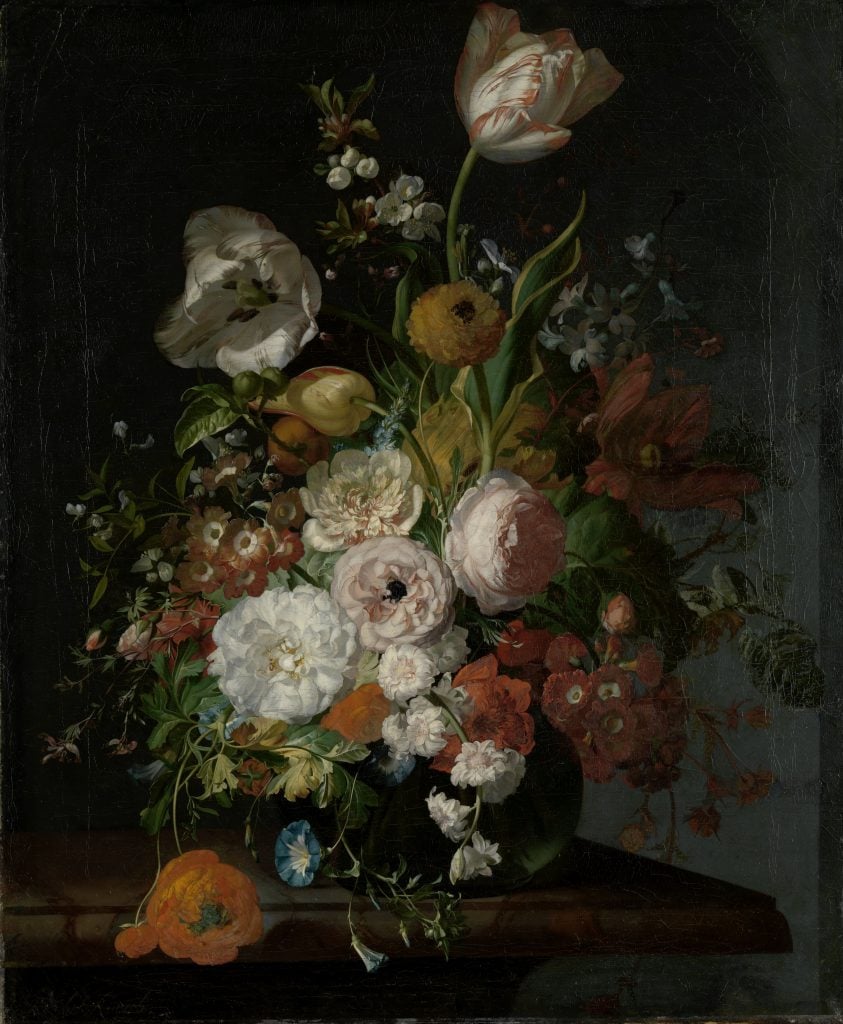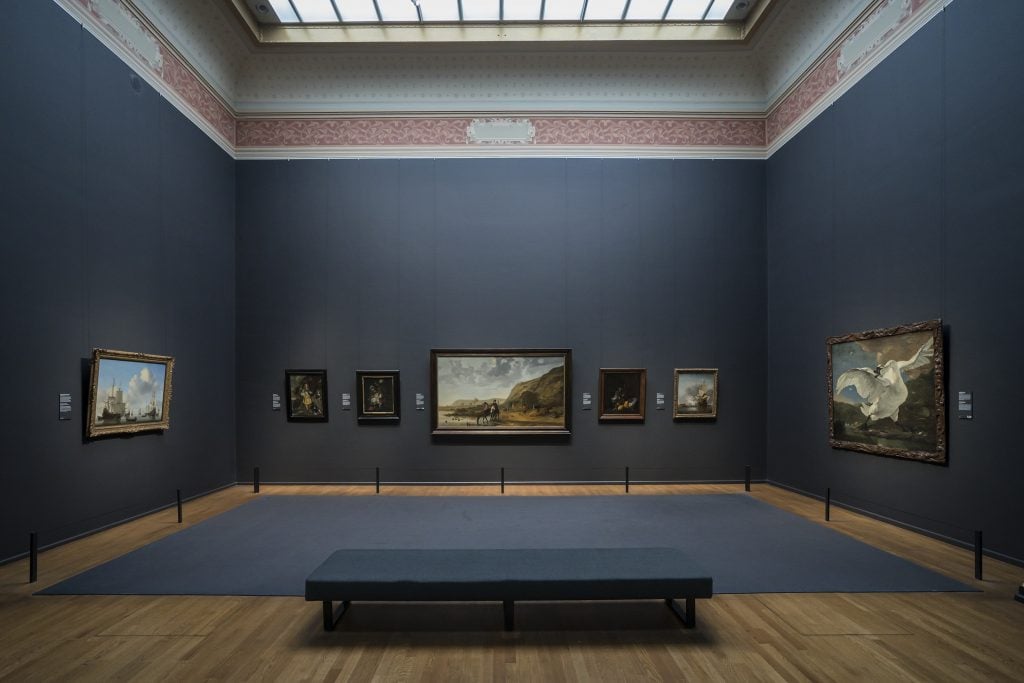Art World
For the First Time Ever, the Rijksmuseum Will Hang Works by Female Dutch Masters in Its Most Prestigious Gallery
The museum is launching a research project to uncover forgotten women's histories at the museum.

The museum is launching a research project to uncover forgotten women's histories at the museum.

Sarah Cascone

At the heart of the Rijksmuseum Museum is a central corridor on the top floor with elaborately painted vaulted ceilings. In this Gallery of Honor, as it’s called, the museum hangs its most prized Dutch masterpieces, with Rembrandt van Rijn‘s The Night Watch (1642) serving as the centerpiece.
Now, for the first time since the building opened in 1885, work by women artists have joined the hallowed display. Finally acknowledging women’s considerable contributions to art history, the museum has hung a trio of paintings by Dutch women artists Judith Leyster (c. 1600–1660), Rachel Ruysch (1664–1750), and Gesina ter Borch (1633–1690) alongside their better-known male counterparts.
Entering the Gallery of Honor “is like walking into a church, with all these chapels on the side and the high altar is Rembrandt,” Jenny Reynaerts, curator of 19th-century painting at the Rijksmuseum, told Artnet News. “We used International Women’s Day to make a statement and add three paintings by women, because it’s all about visibility.”

Rembrandt van Rijn’s The Night Watch is the centerpiece of the Rijksmuseum’s Gallery of Honor. Photo courtesy of the Rijksmuseum, Amsterdam.
That visibility has long been denied female artists, who were all-too-often dismissed as amateurs, their accomplishments forgotten after their deaths, and their works frequently misattributed to their husbands, fathers, or male teachers.
“Women artists were there all the time,” Reynaerts said. “But that’s the story of female artists. Throughout history, they have been so much less visible than their male counterparts.”
The museum has tapped Reynaerts to chair a research program on women’s contributions to Dutch cultural history and their representation in the Rijksmuseum collection. Adding women to the Gallery of Honor is the first step in what is expected to be a four-year project helping foreground the female perspective at the museum in order to paint a more complete picture of Dutch history.

Rachel Ruysch, Stilleven met bloemen in een glazen vaas. Courtesy of the Rijksmuseum, Amsterdam.
The women artists now appearing in the Gallery of Honor were all well known in their time, Reynaerts said. “Judith Leyster was the first female master painter in the 17th century. Rachel Ruysch’s work was sought after by all the courts of Europe.”
The museum doesn’t actually know how many works by women artists are represented in its 1 million-piece collection. So far, Reynaert’s research has identified just 29,311 objects by 2,908 women, including 158 of the museum’s 7,173 paintings.

Works by Rachel Ruysch and Gesina ter Borch now hang in the Gallery of Honor at the Rijksmuseum. Photo courtesy of the Rijksmuseum, Amsterdam.
The museum is also working with students at the University of Amsterdam on a project called “The Wife Of,” which will attempt to fill in the biographies of women who are depicted alongside their husbands in the collection’s portraits.
“And we’re also going to look into the institution’s history,” Reynaerts said. “Who were our female donors over the centuries? Who were the female collectors who were important in creating the image of Dutch art? Who were the female curators? They were called museum assistants, but they had a role in the history of the museum as well.”
Works on view in the Gallery of Honor rotate regularly based on loan requests. But when the Ruysch painting is loaned out in October, the museum will hang another piece by a woman artist, perhaps flower painter Clara Peeters, in its place.
“From now on,” Reynaerts said, “the museum will always have female painters in the gallery.”